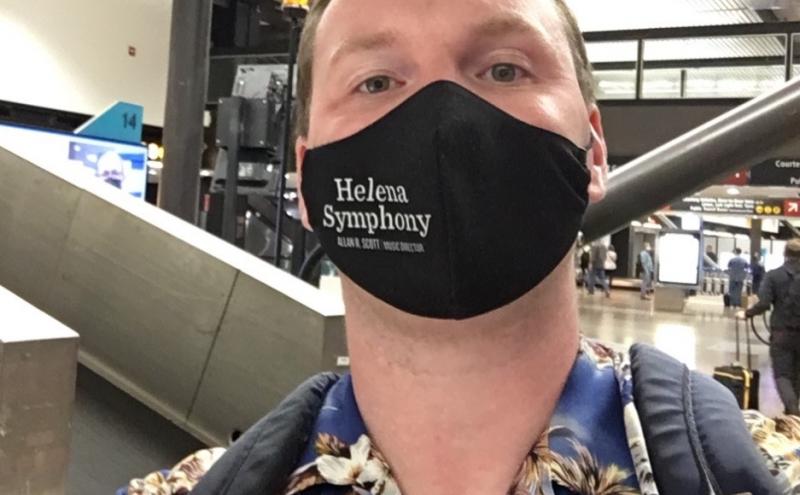
Ryan Fox serves on the Accessibility Advisory Committee for Seattle-Tacoma International Airport (SEA) to advise on facilities, programs, and services for accessible travel.
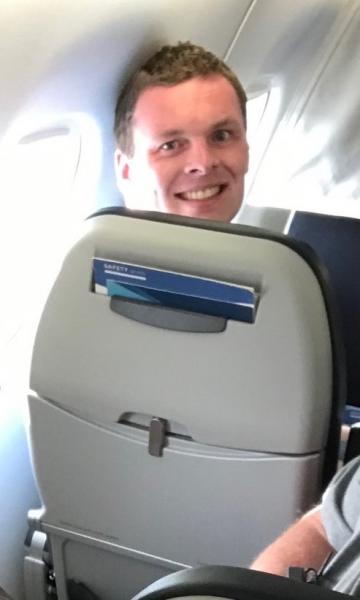 Do you know someone on the autism spectrum? Does that person sometimes need a little extra support when traveling? I can relate! As a person with autism, I have spent years mastering travel — especially air travel — because when I’m feeling calm, safe, and informed I have a more enjoyable trip.
Do you know someone on the autism spectrum? Does that person sometimes need a little extra support when traveling? I can relate! As a person with autism, I have spent years mastering travel — especially air travel — because when I’m feeling calm, safe, and informed I have a more enjoyable trip.
First, let me introduce myself. I’m 29 years old, and I have loved aviation since I was very young. My grandfather was a U.S. Air Force navigator, and my father works for the Federal Aviation Administration (FAA), so I know a lot about airplanes, airports, and airlines. I even wanted to be an airline pilot, for a while but decided to focus on ground careers and minored in Aviation Management at Central Washington University so I would know how airports work. I’ve made friends at SEA since my college days, and now I’m a proud member of the airport’s Accessibility Advisory Committee.
To learn more about myself and help others, I earned a certification through the International Board of Credentialing and Continued Education Specialists (IBCCES) as a Certified Autism Travel Professional. IBCCES developed standards and offers a series of certification programs in autism, ADHD, sensory disorders, mental health, and dyslexia.
I love traveling by air! I even commute by air every month to my job performing with the Helena Symphony in Montana as a percussionist. Most of my journeys by air go in and out of SEA Airport. I have developed some routines that help me enjoy my trips, and I’d love to share them with you during April's National Autism Awareness Month.
Plan ahead
The biggest comfort to me is information and knowing what to expect. This starts with thinking about my trip in advance.
- Would I rather go nonstop to avoid two planes in one day?
- Or would I prefer shorter segments to walk around and get a break?
For me, I don’t enjoy traveling in really early or late hours because it’s disorienting, so I try to travel midday. I also love nonstops and window seats so I can look out.
Use travel tech
- I love the Mobile Flight Tracker App byFlightAware on my phone because it tells me everything about gate information, flight status, and even where my incoming plane is so I know when to watch for its arrival.
- There’s also a FlySEA App with helpful information like step-by-step directions in the interactive map. I also study airport signage so I’m very familiar with the terminal map and gates.
- I watch YouTube videos about the planes and destination cities, and I enjoy the Social Story on SEA’s website.
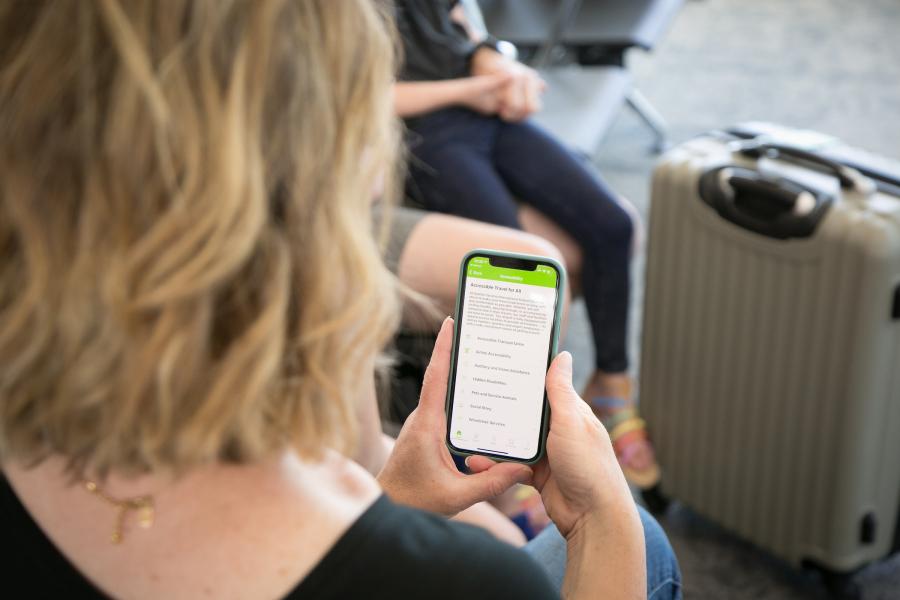
Focus on creature comforts
I don’t like a heavy feeling in my stomach when I fly, so I don’t eat much within about four hours of departure. I do like beverages such as ginger ale, and I pack snacks like granola bars, raisins, and cookies.
The Sensory Room at SEA is a calming environment if you feel overwhelmed or overstimulated.
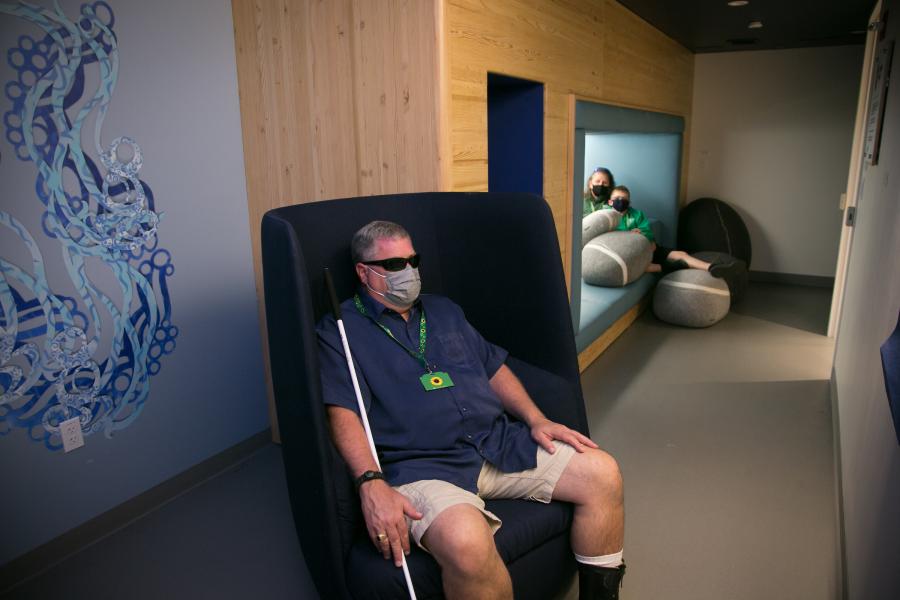
Develop airport routines
Having airport routines relaxes me. Mine are mostly related to getting through security.
- I always wear a similar kind of shirt when I travel, and I put my boarding pass in my pocket, along with my ID.
- I take my belt off and put it in my backpack with my phone until I’m through security.
- I signed up for the Trusted Traveler program to use TSA PreCheck.
- I pack my suitcase in the same way on each trip and I check it with the airline, so I don’t feel bogged down or overwhelmed with gear to manage.
I wrote a blog several years ago for the Arc of King County about the wonderful Wings for Autism program. It was created as a recognition that people with autism do better when they can learn ahead of time what air travel will involve and have a chance to practice at a real airport. I highly recommend this program! There is interest in expanding to a number of differently-abled folks, not just those with autism, and I think this is a terrific idea.
Communicate needs
Another thing I do is communicate my needs. This is important because I have found that when people know of my autism, they support me. I print out some special business cards with pointers about Autism Spectrum Disorder (ASD). I give these to the gate agent, flight attendant, or even nearby seatmates. In nearly all cases, people appreciate receiving a card, and they are extra patient with me. Sometimes I even get a second can of ginger ale onboard because the flight attendant remembers my preference.
SEA offers the Hidden Disabilities Sunflower lanyard to passengers with hidden disabilities such as autism, PTSD, or hearing loss, which communicates that passengers wearing it may need extra help while traveling.
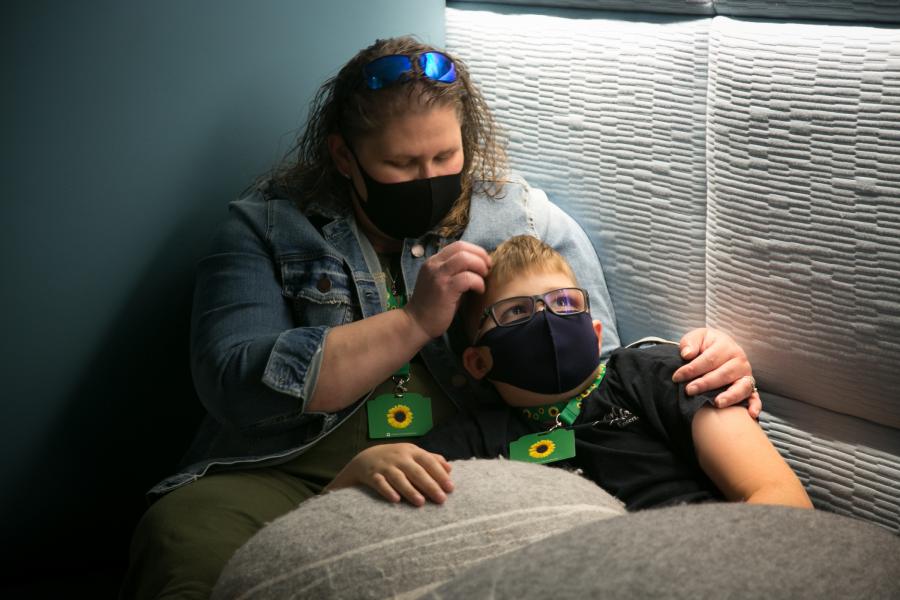
SEA has a goal of being the most accessible airport in the nation, so they are always working to learn about different passenger needs and accommodate them to the maximum extent possible. I encourage you to create your own travel routines and toolkit so you will feel comfortable taking a journey by air. Happy travels!




